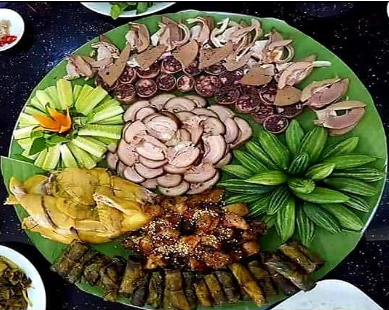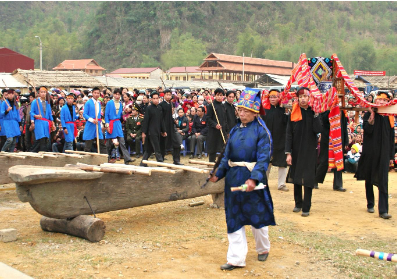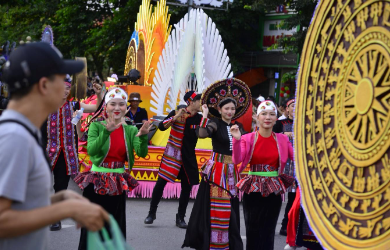X
13/12/2023 31/12/2023
486 0
Can wine is called "Ra̭w Toong" in Muong language. No one knows for sure when the Muong people knew how to make wine, they only know that it is a fermented drink that has been used in their lives for a long time and it was born from skillful hands, intelligence and kindness. the conduct of Muong women. Drinking Can wine from the Muong people seems to make us enjoy a unique culture filled with warm human love. Wine can be used to drink in the family, drink during fun receptions, drink at weddings, celebrate new homes, worship at funerals, grave thanksgiving ceremonies and some other rituals.
How to make wine of the Muong people.
Like other types of wine, the most important thing that determines whether a wine is good or not is the yeast. Wine yeast is like the soul of the wine jar. The most delicious yeast ever used by Muong people is leaf yeast, a type of yeast made from leaves in the forest, from special ingredients such as chili, ginger, galangal, jackfruit leaves, guava leaves and many forest leaves such as raspberry leaves, camphor bark, wild cardamom strings, mountain leaves, etc. and an indispensable ingredient is ebony bark, which makes sweet wine is beneficial for health and has profound community spiritual and cultural values.
“Leaf yeast – Yeast made from natural leaves” is the ingredient to create delicious flavor of Can wine of the Muong people
Ingredients for wine include sticky rice, rice husks and wine yeast. Sticky rice is soaked overnight to soften, the husk must be thoroughly washed, dried, then mixed all the rice and husk together and put into the dish to steam). After the rice is cooked, let it cool, then mix in the yeast and continue fermenting for one night (so that the wine yeast absorbs into the rice and rice husks). The person who mixes the yeast must ensure that the yeast is evenly absorbed into each grain of rice and rice husk. Only then will the wine last for a long time. However, if the temperature is not warm enough, the wine will not ferment and all previous steps will be considered abandoned. If you try to continue making it, the wine will be sour, bland, and undrinkable. When the wine is successfully fermented, people will put it in a wine jar to wait until it is ready to drink. The fermentation jar must be tightly covered to prevent air from spoiling the wine. In the hot season, it only takes about 20 days for the wine to be sweet, but in the cold season it takes more than a month to be usable.
Muong women mix main ingredients such as rice husks and sticky rice
and natural yeast to brew into wine
One of the elaborate and important purchases of the Muong people is wine jars. Wine jars are sometimes even more important than buying Gongs. They are proud to buy many large, beautiful wine jars. Because the value of each previous jar of wine to the Muong people is very great. It also represents the wealth of each family, because there are jars of wine that must be exchanged for buffaloes and bulls. The wine jar truly becomes a precious treasure for every family. In daily life, they preserve and store wine jars very carefully. Many families also weave a thin layer of bamboo to carefully wrap the outside of the wine jar.
How to drink Can wine of Muong people?
Making Can wine is inherently sophisticated, and Muong people are equally sophisticated when it comes to drinking wine. There are many forms of organizing drinking wine can, typically drinking in groups - families drink together and wine can in the Muong village community - wine is drunk with a large number of people in the Muong participating. Being huddled means not wanting to let outsiders know about something, only those present know it together. Wine should be brought together to drink in the sun at noon, at break time or in the evening to satisfy cravings and relieve fatigue. Anyone can drink as much as they want, regardless of any customary law. They often sit and drink in the corner of the stilt kitchen, next to the tea set, and smoke a pipe. Before drinking, direct all the wine toward the kitchen for a while, with the intention of letting the three kitchen kings drink first, and then the next person can drink.
With the way of drinking according to the village community, the wine needs to be kept in the middle of the house, the main room, with bamboo poles facing up to the sky to visit the pipe. They appointed a guy to control the fun called "the Tram Man". This guy also directly measured water into the pot of wine for everyone to drink and calculated the drinking score for the competition like a referee. Whether or not the fun is lively depends partly on the role of the Tram man. First, people will invite you to drink "Tham khoe – it means check the wine". It means drinking to see the quality of the wine, because the longer the bottle of wine is drunk, the lighter it will become. Only at first will it react to its true quality. During the week of drinking "Tham khoe", dozens of people usually drink only one ladle of wine together, usually the men drink first, the women drink later. Everyone sits around the jar of wine but still follows the order of age and kinship. Older people sit on the top place of the mat, younger people sit below erea of the mat. After drinking "Tham khoe", the drinking continues. What must they do to make the drinking fun and please the host? They believe: "The wine in the house is the owner's wine, and the wine brought out to drink in the middle of the house is the guest's wine. Guests have the responsibility to make the host happy."
Since ancient times, rods were made of bamboo or pine tubes (hollow tubes). The fresh hollow tube is heated over fire and then bent into a shape depending on the curvature of the wine jar. In particular, the shape of the rods depends on the owner's personality, so no two rods are the same. The wine bottle is a family heirloom, the more it ages, the more rare it becomes and is considered a dowry. To get a delicious jar of wine, from making to drinking it must be meticulous. The custom of drinking can wine often has pairs: even goes with even, odd goes with odd, using two or three tubes at the same time. As soon as the wine runs out, more water is added to the jar so that the surface of the water in the wine jar is always teetering on the edge of overflowing the jar.
The custom of drinking alcohol needs to show how to drink alcohol in groups and gatherings. Everyone enjoyed the joy of Muong village customs. If there are guests, the homeowner spreads a square mat in the middle of the floor, holds a jar of wine, places it in the middle of the mat, and then invites everyone present in the house to sit around. After asking about the family's health and hometown, the host invited everyone to press their lips together and drink "from the garden and stream to ease the fatigue of the long journey". Muong people call it drinking step one (also called drinking pine can). Next is double drinking (host and guest), male and female drinking, four-person drinking, six-person drinking and many more. They drink and sing, asking for greetings, singing invitations, singing farewell songs, singing making promises. Today, Can wine has become a famous specialty not only in Hoa Binh but has a nationwide brand that many diners seek to enjoy.
A reception for guests coming to visit a family with Can wine on traditional house on stilts of the Muong Hoa Binh people
Can wine has entered the lives of Muong people as an indispensable cultural element, so it is highly valued and popular by Muong people in daily life and has become a unique cultural heritage throughout the past. The development process from thousands of years ago until today of the Muong people.

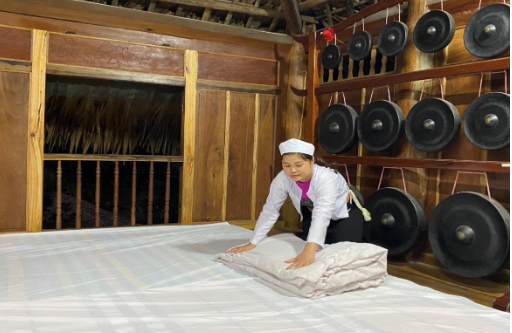
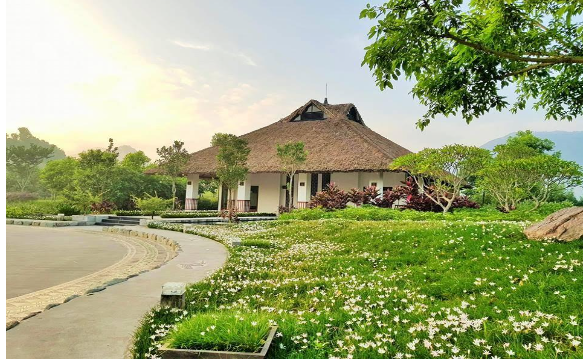
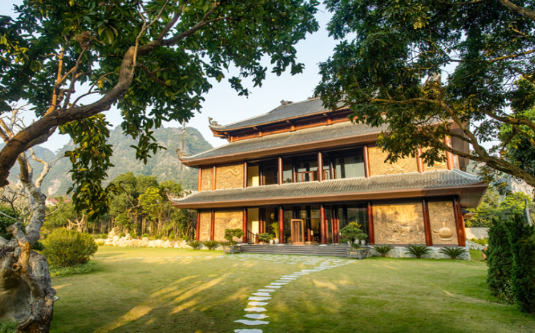






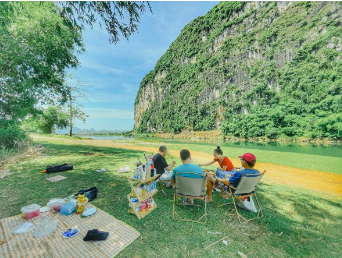

_636886053534704917.jpg)




